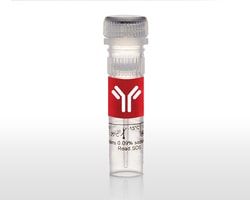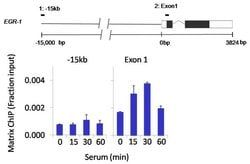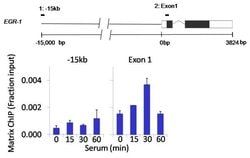Caspase 9 Monoclonal Antibody (LAAP6 96 2-22), Invitrogen™
Manufacturer: Thermo Scientific
Select a Size
| Pack Size | SKU | Availability | Price |
|---|---|---|---|
| Each of 1 | 01-674-348-Each-of-1 | In Stock | ₹ 47,481.50 |
01-674-348 - Each of 1
In Stock
Quantity
1
Base Price: ₹ 47,481.50
GST (18%): ₹ 8,546.67
Total Price: ₹ 56,028.17
Antigen
Caspase 9
Classification
Monoclonal
Concentration
1 mg/mL
Formulation
PBS with 0.08% sodium azide
Gene Accession No.
P55211
Gene Symbols
CASP9
Immunogen
Recombinant human capase-9 protein.
Quantity
100 μg
Primary or Secondary
Primary
Target Species
Human
Product Type
Antibody
Isotype
IgG1 κ
Applications
Western Blot
Clone
LAAP6 96 2-22
Conjugate
Unconjugated
Gene
CASP9
Gene Alias
25 kDa caspase-9 dominant negative protein; AI115399; APAF3; APAF-3; apoptotic protease activating factor 3; apoptotic protease MCH-6; Apoptotic protease-activating factor 3; AW493809; cas9; CASP 9; CASP9; CASP-9; Casp9_v1; Casp-9-CTD; caspase 9; caspase 9, apoptosis-related cysteine peptidase; caspase 9, apoptosis-related cysteine protease; Caspase9; caspase-9; caspase-9 dominant negative form; Caspase-9 precursor; Caspase-9 subunit p10; Caspase-9 subunit p35; CASPASE-9c; caspase-9-carboxyl-terminal divergent; CTD; Ice-Lap6; ICE-like apoptotic protease 6; Mch6; OTTHUMP00000002324; PPP1R56; protein phosphatase 1, regulatory subunit 56; RNCASP9; RP11-265F14.3
Host Species
Mouse
Purification Method
Protein A/G
Regulatory Status
RUO
Gene ID (Entrez)
842
Content And Storage
-20° C, Avoid Freeze/Thaw Cycles
Form
Liquid
Description
- A suggested positive control for this product is MCF-7 cell lysate
- Caspase 9 (ICE-like apoptotic protease 6, ICE LAP6, apoptotic protease Mch6, apoptotic protease activating factor 3, Apaf3) is a member of the peptidase family C14 that contains a CARD domain
- Caspases are cysteine proteases, expressed as inactive precursors, that mediate apoptosis by proteolysis of specific substrates
- Caspase 9 is active as a heterotetramer, is present in the cytosol and, upon activation, translocates to the mitochondria
- Caspase 9 is involved in the caspase activation cascade responsible for apoptosis execution and cleaves/activates Caspase 3 and Caspase 6
- Further, Caspase 9 is involved in the activation cascade of caspases responsible for apoptosis execution
- Binding of caspase-9 to Apaf- 1 leads to activation of the protease which then cleaves and activates caspase-3
- Caspase 9 promotes DNA damage-induced apoptosis in a ABL1/c-Abl-dependent manner, and proteolytically cleaves poly(ADP- ribose) polymerase (PARP)
- Caspase 9 is expressed in variety of human tissues
- An isoform of rat Caspase-9 has been identified in which the C terminus of full-length Caspase-9 is replaced with an alternative peptide sequence
- Mutations in Caspase 9 affect brain development
- In mice, insufficient Caspase 9 have resulted in abnormal cerebrum development and neuron development
- In humans, dysfunctional Caspase 9 expression vary from tissue to tissue
- Low levels of Caspase 9 may play a role in cancer development and neurodegenerative diseases such as Alzheimer’s Disease (AD).








